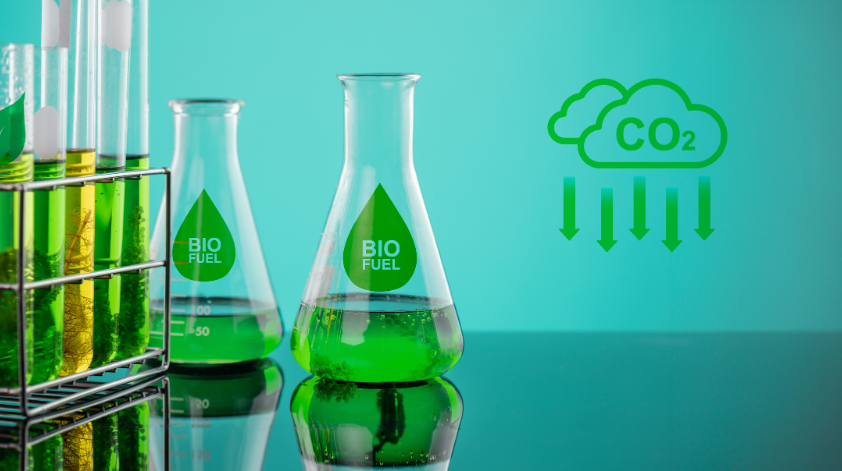ISO 8217:2024 – the new standard
Seven years following the release of its predecessor, we discuss the key changes to the new marine fuel specification, and its importance to the industry as it begins its transition to net zero carbon emissions.

In this article, we will be discussing the release of ISO 8217:2024 (the “New Specification”), which was published at the end of May 2024 on ISO’s website.
Background
It has been over 7 years since the previous iteration of the standard, ISO 8217:2017 was published. In that time the shipping industry has taken giant steps forward in terms of regulation, innovation, research, and increased technical understanding of the fuel that powers global trade.
Furthermore, there has been a growing acceptance of the fact that the shipping industry must do more to reduce its greenhouse gas emissions. These are ambitious objectives that will require extensive collaboration from the various and diverse stakeholders if the shipping industry's goal of net zero is to be achieved.
What has changed?
What has become increasingly clear, is that the IMO’s net zero target will not be achieved using a single and universal fuel type. It is of little surprise, therefore, that the New Specification covers a far broader spectrum of marine fuel oil blends than its predecessors, with an increased focus on biofuels.
However, it is important to note that the New Specification is only indicative of the quality of fuel delivered to the Vessel. It does not assist in evidencing the sustainability criteria of the fuel supplied.
Proof of sustainable fuel must be sought from and verified by the fuel supplier, where a Proof of Sustainability document, or a supplier declaration, should accompany the purchase of the biofuels, confirming that the fuel (and feedstock the biofuel is sourced from) is certified as sustainable.
The most striking change to the New Specification is the broadness of its scope. The tables of specific fuel types have expanded from two to four, covering Distillates (Table 1), VLSFO (Table 2), Biofuels (Table 3), and HSFO (Table 4).
Changes to Table 1
(i) Fuel with a fame content of up to B100 replaces the maximum 7% previously applicable to DF grades;
(ii) The New Specification no longer distinguishes between summer and winter distillate Cloud Point (“CP”)1 , and Cold Filter Plugging Point (“CFPP”)2 .
(iii) Cetane number for DF grades has a new minimum limit.
(iv) Oxidation Stability for DF grades has been added.
Changes to Table 2
(i) A minimum viscosity requirement, allowing for more precise fuel handling and purification temperature. This also means that off specification CCAI should no longer be an issue if the Density and Viscosity parameters are on specification. For further information on this parameter, please see the CIMAC FAQ linked at the end of this article.
(ii) As well as Total Sediment Potential (TSP), there is a new requirement to also report Total Sediment Existent (TSE) and Total Sediment Accelerated (TSA), to give a fuller picture of the fuel’s sediment and stability profile. TSP remains the reference method for this parameter.
Table 3
(i) Fuel blends of up to 100% FAME content are now included. These blends will be obligated to comply with EN14214 (Automotive Diesel) specifications (except for Sulphur, CP or CFPP parameters), or ASTM D6751 (except for Sulphur requirement).
(ii) Shares the amended sediment and stability provisions of Table 2, above.
(iii) FAME content of the fuel needs to be reported.
Table 4
(i) Incorporates the same minimum viscosity requirements as Table 2.
(ii) TSA is accepted as a reference method for the parameter.
General Requirements
The General Requirements section has received a major update, as a result of the massive uptick in claims relying on testing methods that fall outside the standard Tables.
Amendment to the wording of the clause establishes that the General Requirements apply to all four Tables, and that all the requirements therein must be met for the fuel to be deemed on specification. This amendment has been implemented to combat Sellers attempting to sell fuel pursuant to specific sections of the New Specification only (e.g. an attempt to exclude Gas Chromatography Mass Spectrometry (GC-MS) analysis from the sale contract). The message from the drafting committee appears to be that the New Specification should be implemented in its entirety, and not for suppliers to cherry-pick only favourable requirements.
As with any evolving standard, great care has been taken by the drafting committee, to address industry concerns that have arisen since the last standard was published. For example, we see that the General Requirements set out a de minimis limit on Organic Chlorides, the compounds that caused Shipowners so many issues in Singapore in 2022.
Annexes and other help
As with its predecessors, the New Specification includes several informative annexes on various parameters of the Tables, including on their characteristics and properties.
Both CIMAC (International Council on Combustion Engines) and FOBAS have published FAQ documents to assist Shipowners and other industry stakeholders understand the New Specification and the changes from the previous standard.
1 Defined as the temperature at which clear fuels become cloudy or hazy, signifying wax crystal precipitation in the fuel.
2 Defined as the lowest temperature, expressed in degrees (°C), at which a given volume of fuel still passes through a standardised filtration device in a specified time when cooled under certain conditions.


